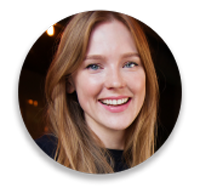
Connecting Creators, Businesses, and People with Paradigm
Overview
Paradigm understands current pain points that users today encounter on many media platforms and offers a better experience. In this study, we’ll hear from users their current pain points and what an ideal platform would be for them.
Understanding the Audience
First, we need to get to know our audience. A survey was sent out to various individuals that asked questions about platforms and usage.
I asked questions that helped form an understanding about key areas:
- Platforms used (video streaming, music streaming, etc.)
- Usage activity
- Types of content
- Platform content (quality, variety, etc.)
- Personalization
- Quality of life (alerts, improvements, what is missing, etc.)
From the research it was very clear that respondents gravitated to platforms that pushed content to them while having social aspects. However, the platforms typically had a vast variety of content.

The main content-types viewed were tv series, content creators, and music. These top three content types represented the bulk of the respondents at a whopping 77.78% to 88.89% of responses!
Respondents noted that they frequently used these at night while doing activities like cooking, studying, or working out. It was also clear that even if they had no activity in mind and were just looking for something to do, that they actively were seeking out something from these platforms to entertain them.
Respondents were happy with the quality and types of content that were offered to them but were very clear in expressing that they wanted it to be tailored to their viewing habits or interests.
Of course, while respondents were happy with some aspects of the platforms, there were some other aspects of the platforms that frustrated them.
Some quotes include:
“I would say that Youtube could do a better job filtering content. It often times shows me videos I’ve already watched in the search function.”
“Less ads in the middle of streaming cheaper versions of content. Makes me want to not continue.”
After the initial survey, I was able to gather volunteers for one-on-one interviews that delved more into the dynamics of their intent behind the platforms they use.
Key themes that came out of the interviews were:
- I want to have content tailored to my likes and needs pushed to me. Socialization is a big part to me, but I also want to have the ability to customize certain elements that belong to me. It’s important to me that I can also share content to my friends and family.
- I’m a content creator and I want to feel supported. Platforms that I use today favor larger content creators over someone like myself and offer no help in growing my audience.
- I own a business and am looking to increase my reach and number of clients. I don’t think that platforms today offer the tools and knowledge to help businesses grow.
Building Personas
Hearing the good, bad and their frustrations, I was able to distill these responses into three personas.
The data gathered from the survey and one on one interviews provided very good insights. Through qualitative research, I was able to understand how people use current offerings, what they are looking to get out of what they use, and their current frustrations. This data is invaluable in creating a solution that solves their wants and needs.
Designing a Solution
From the research, I had a clear vision in mind and in comes Paradigm. Paradigm aims to be a platform that supports all three personas. Personalization and relevant content for Lucas, supporting those who create content, tools, and the means for business owners.
Key features of Paradigm include:
- A tailored feed to their likes and interests that the algorithm learns from their interactions
- Quick access to posting content
- My Paradigm, a space where users can express themselves and share with other users
- Paradigm Cards which are shareable calling cards for users that can be customized.
- A community aspect where users can join groups of other users who have similar interests as them.
- An analytics and tool dashboard to help content creators and business owners with their goals.
- A marketplace for content creators and business owners to sell their merchandise.
Introducing Paradigm
A follow-up interview with respondents was conducted. Respondents were introduced to the Personas and the Paradigm experience. The responses to the personas and experience were overwhelmingly positive and general sentiments were that they could see themselves using Paradigm.
The Personas that were introduced resonated with the respondents. In some instances, one respondent noted that all three Personas have similarities that could apply to them!
Respondents noted that this could be a strong contender to the current platforms that are on the market currently. There were some concepts and flexibility that were offered on Paradigm that they did not see was consistently offered on other competitors.
Wrap Up
Paradigm serves as a great example of creating a better user experience by listening to the feedback offered by users. It is an app that satisfies the needs of those that view content, and those who want to build their brand or business.





